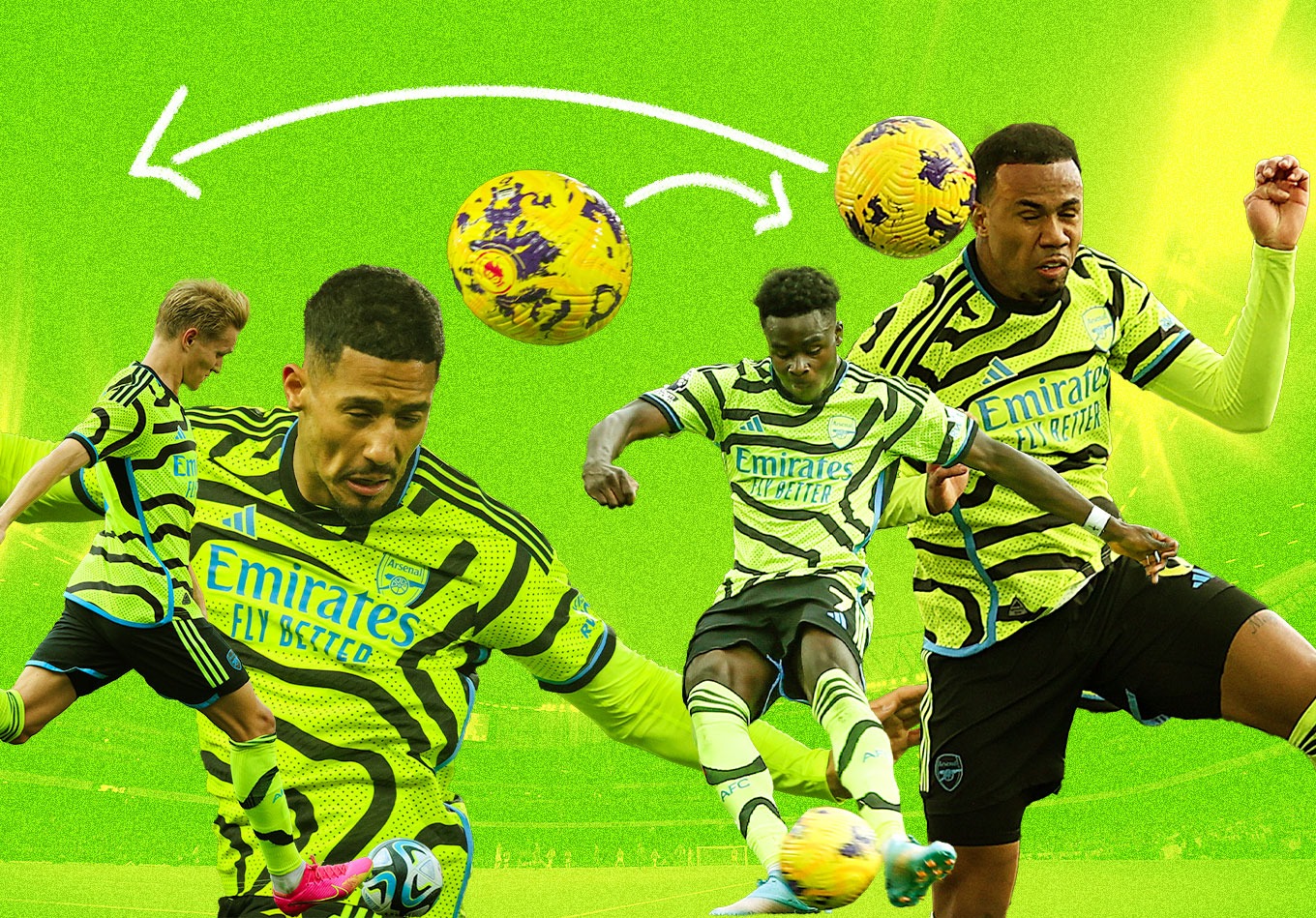Arsenal set-pieces are a hot topic after they scored from two more against West Ham. We analysed their output to see just how good they are.
Mikel Arteta has done a stellar job at Arsenal, transforming them into a side with legitimate aspirations for success. They’re also one of the most entertaining teams around, blessed with serious attacking talent that make them dynamic when on the front foot but also difficult to play against when not in possession.
However, they’re arguably quite unconventional for a ‘pretty’ side. Yes, they play entertaining football, but also being an absolute nightmare to defend against at set-pieces isn’t necessarily something you associate with those sides who like to get the ball down and play.
No, there’s almost a hint of snobbery involved in how some may have perceived the use of set-pieces over the years, like lumping a high ball into the box for a big bloke to head in is somehow beneath certain teams and instead the realm of ‘route-one’ types.
But obviously that’s nonsense. Any route to goal is legitimate – so long as it’s, well, legitimate – and Arsenal are the proof in the pudding that you can be both pretty and robust, with their effectiveness at attacking set-pieces simply unrivalled in the Premier League at the moment.
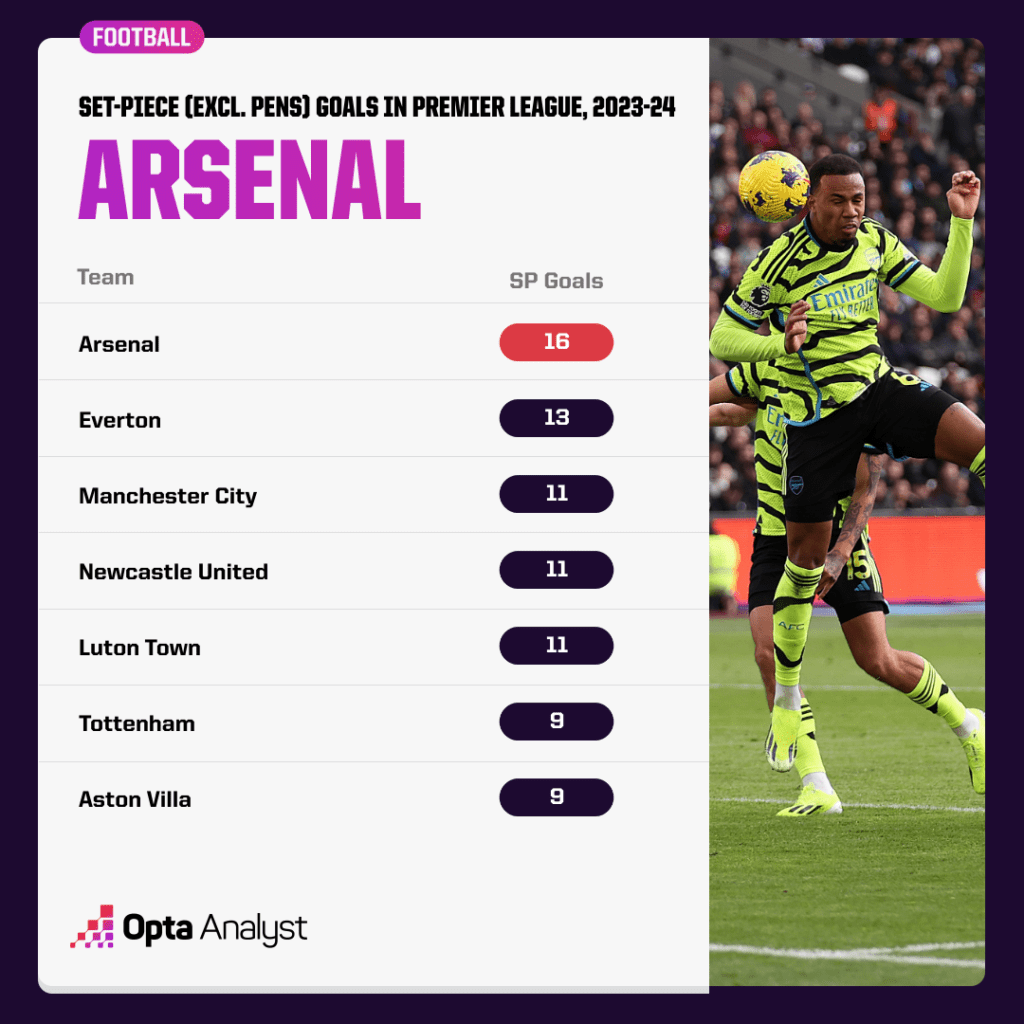
West Ham were the latest team to fall victim to Arsenal’s set-piece excellence on Sunday. It was a one-sided encounter, with the visitors absolutely ruthless in a 6-0 demolition. But it took them 32 minutes to open the scoring – and the floodgates – with their dead-ball nous proving reliable once again in finding a way through initially stubborn opposition.
Alphonse Areola had just produced a stunning save to tip Leandro Trossard’s volley over, but the Frenchman was helpless at the resulting corner. Declan Rice’s delivery was exceptional; it had the pace and height to evade everyone at the front post or in the middle of the six-yard box, instead finding the crowd of Arsenal players at the back post. William Saliba was the one to get the decisive header in on goal, though there were four Arsenal players in that zone waiting for an opportunity to meet the ball.
Another Rice set-piece caused havoc as Arsenal made it 3-0. The former West Ham captain’s wicked free-kick cross from the left flank flew towards the near post, and Gabriel Magalhães got on the end of it to glance beyond the helpless Areola for his 14th Premier League goal since arriving in England, the most of any defender since the start of the 2020-21 season.
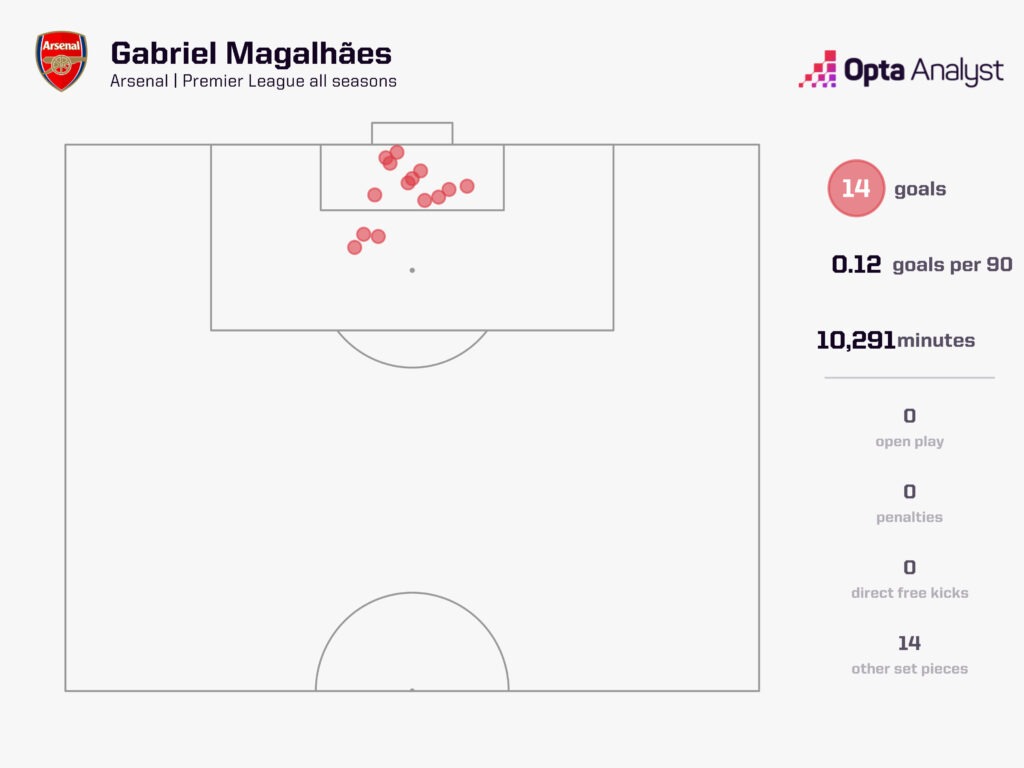
That in itself is evidence of how good Arsenal have become at set-pieces under Arteta and his dead-ball expert Nicolas Jover, with the Brazilian now only behind Laurent Koscielny (22) for goals scored by Arsenal defenders in Premier League history – it’s no coincidence.
Jover is the one who’s been credited with their improvement in this area since following Arteta from Manchester City in 2021, and it should be pointed out that Arsenal being effective at set-pieces isn’t anything new – it’s just that this season they seem to have found another a level, a level above anyone else.
So, what do they do?
Well, you obviously have to mention the fact they simply have several players who are comfortably over six feet tall, two of whom joined them ahead of this season in Kai Havertz and Declan Rice; we can talk about intricate set-piece routines until the cows come home, but there’s no getting away from the fact having a taller, more physical team is clearly an advantage.
But at the same time, using that as the sole explanation would be to completely overlook the fine work Jover has done and the seemingly endless ways Arsenal manoeuvre themselves at set-pieces to gain an edge.
There’s no standing around hoping the ball lands right on your head; there are runs from front post to back post, back post to front post; runs along the goalline before curving back to get flick-ons at the near post; there are mischievous blocking tactics aplenty. And that’s just from corners. We also have to note their habit of having players start free-kick routines in an offside position to make themselves harder to track.
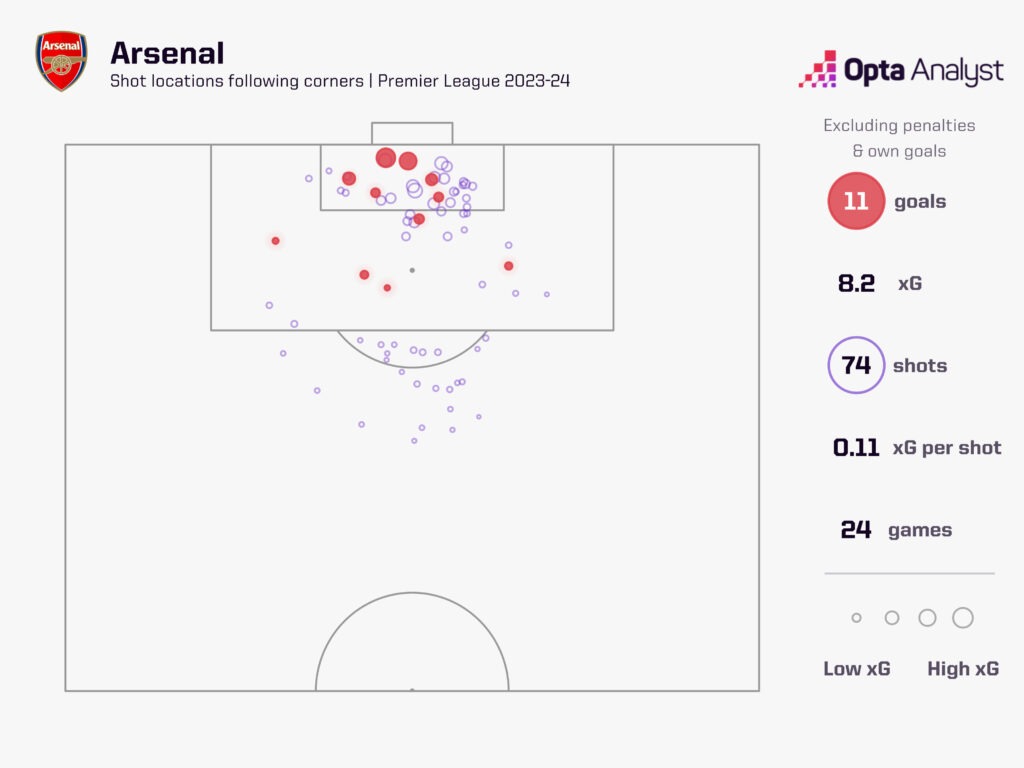
Corners are where the majority of their set-piece goals come from, though. Their 11 goals from corners is two more than anyone else in the Premier League this term and they account for 20.8% of their overall haul of 53; only Everton (34.6%) and Luton (24.2%) score a greater proportion of their goals from corners.
While Arsenal mix up their corner routines a great deal, there are two particularly common elements. Firstly, they pack the six-yard box more than any other team in the Premier League, averaging 3.31 players in that area at each corner – no other team averages over 2.93. This obviously suggests a focus on disrupting the goalkeeper and his defenders as close to goal as possible. It may not be revolutionary, but it’s certainly noteworthy considering their goals output.
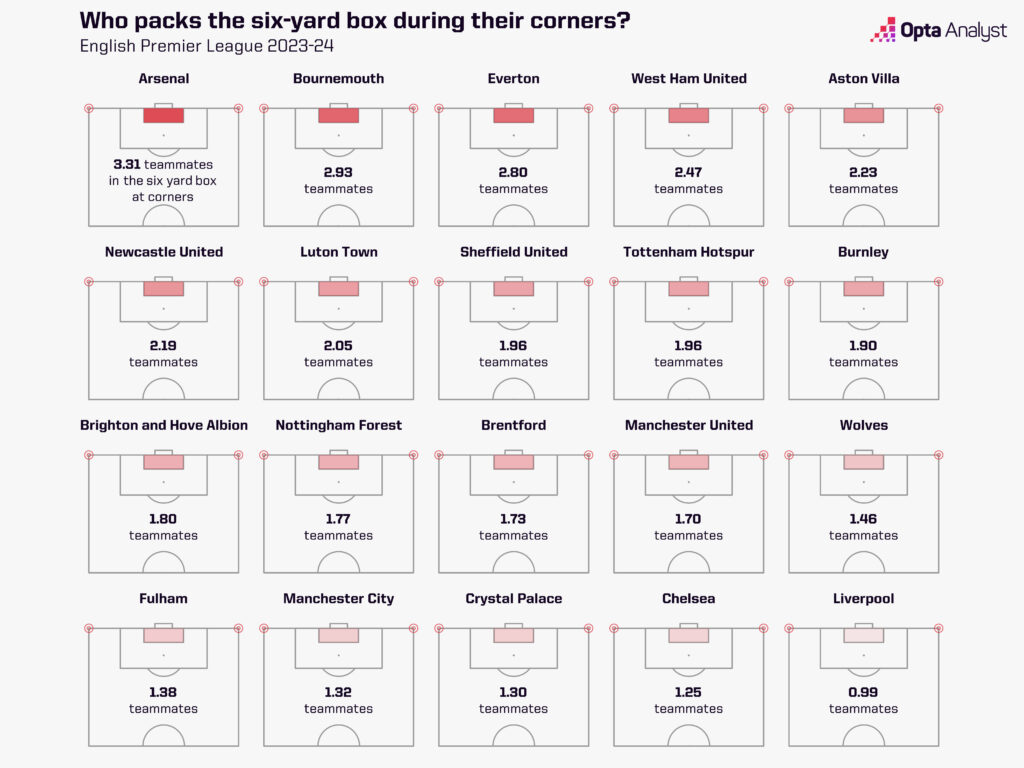
The other common denominator with Arsenal corners is their consistent preference for inswinging deliveries over outswinging ones. Just 0.7% of their crossed corners are outswingers, the lowest percentage in the division in 2023-24. Again, it’s not like Arsenal are pioneers of this – inswingers generally going closer to goal than outswingers is simple physics. But the fact they pack the six-yard box in conjunction with this approach gives us an idea of how much pressure they intend to put their opponents under, even if it doesn’t always work out.
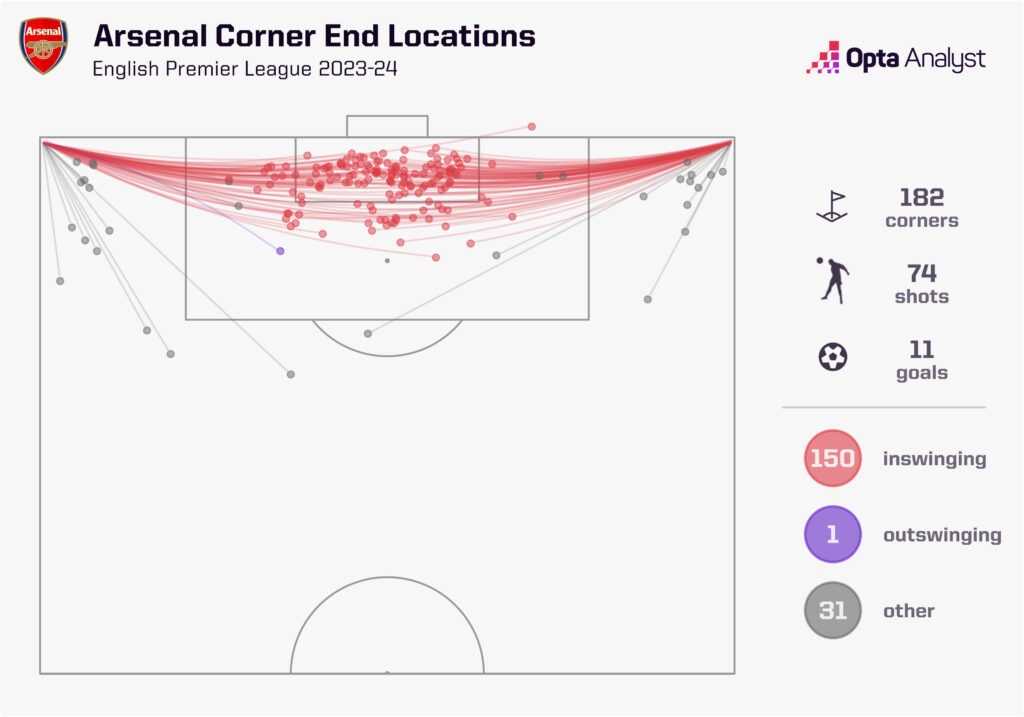
But there’s also more to it than sheer numbers in the danger zone and choosing inswinging over outswinging crosses. There are some aspects that are simply impossible to put numbers on – you have to actually see them, and Arsenal have created some routines that are definitely worth watching.
Arguably the most effective of all they managed to pull off twice in one game against Crystal Palace. For the first, Trossard was the designated blocker in the six-yard box and he managed to obstruct two defenders, simultaneously opening a space for Gabriel to meet Declan Rice’s sumptuous cross and head home.
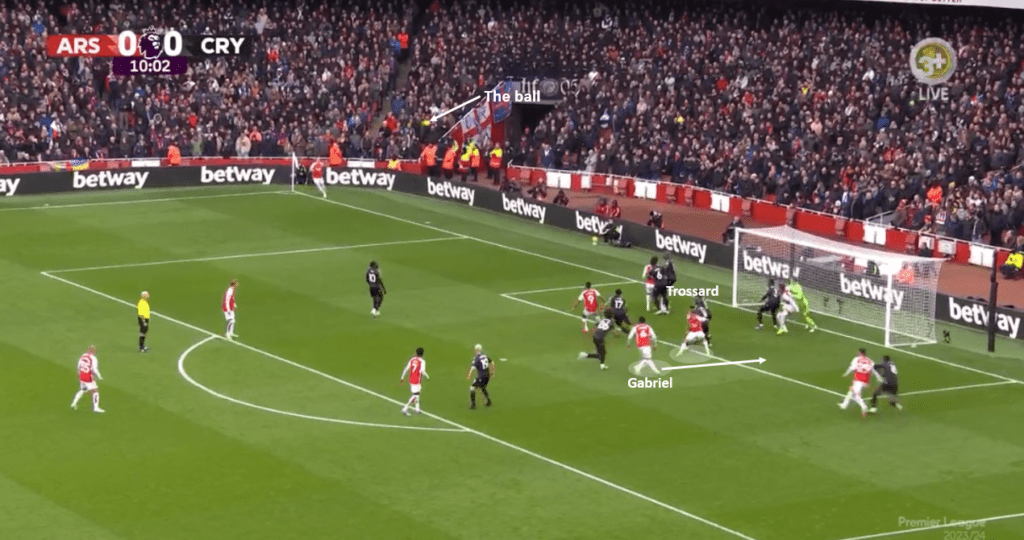
Trossard was then the blocker again as Gabriel got his second, the Belgian preventing a couple of defenders from obstructing his teammate’s run to the back post, where he stooped to nod in Bukayo Saka’s deep delivery.
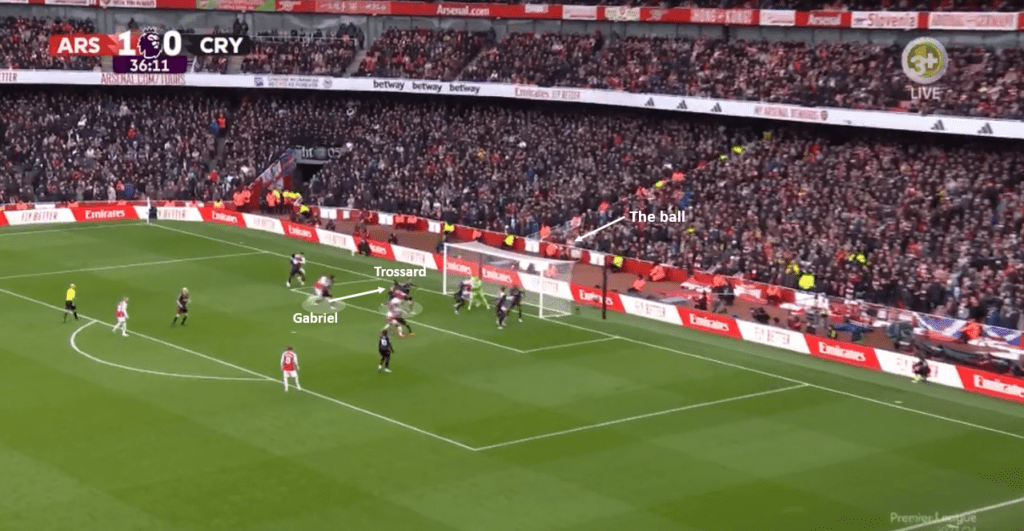
There was another fine example of effective blocking against Sheffield United. Ben White’s earned himself something of a reputation for this as he shifted his body in front of goalkeeper Wes Foderingham and a defender, engaging them as soon as Saka’s cross was fired in. The disruption caused the keeper to unconvincingly flap at the ball, allowing Eddie Nketiah to blast in from close range.
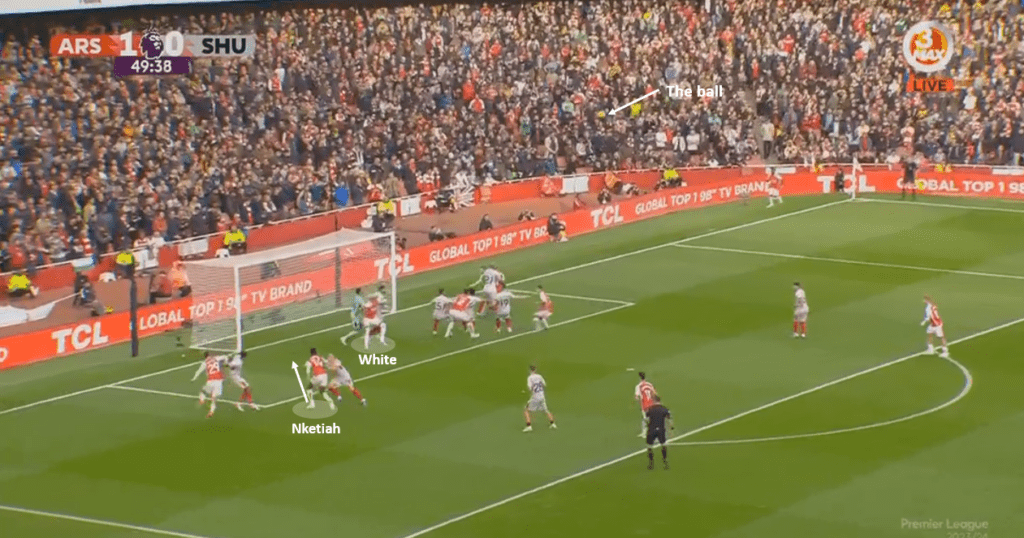
And then there’s the less conventional back-post-to-front-post run en masse that has been a feature this season and paid dividends at the weekend. When Rice began his run-up, there were five Arsenal players either at the back post or beyond it; West Ham weren’t marking to the man so were completely outnumbered in that part of the box, meaning the delivery just needed to be on the money – suffice to say, it was.
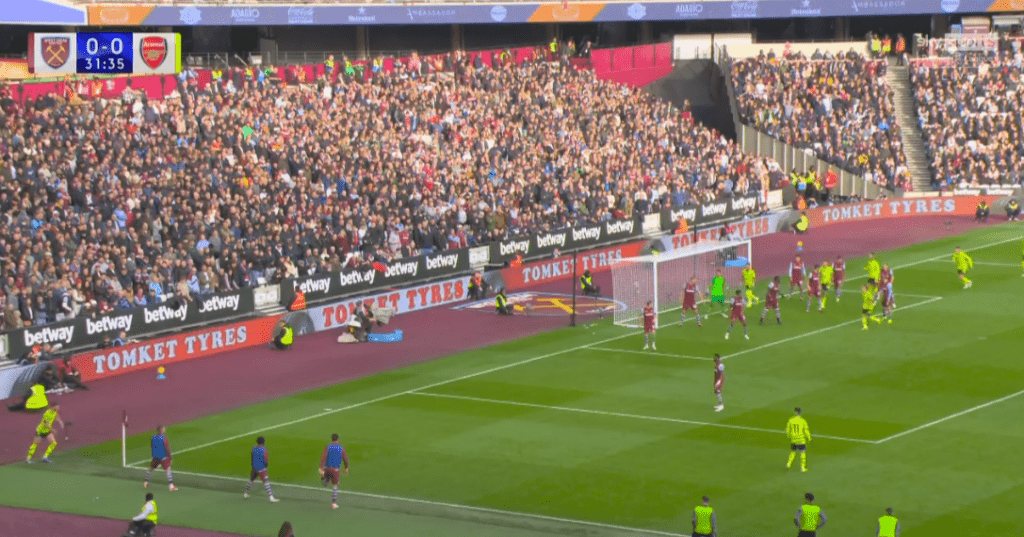
It’s worth pointing out, as the graphic below shows, the majority of their corners target the near post. However, their 14 successful corner deliveries to the back post is second only to Everton (15), while the Gunners’ three goals from such situations is more than any other side in the Premier League this term, highlighting how effective they can be when looking to switch things up a bit. Such adaptability can only be a positive and another indication of Jover’s preparation and impact.
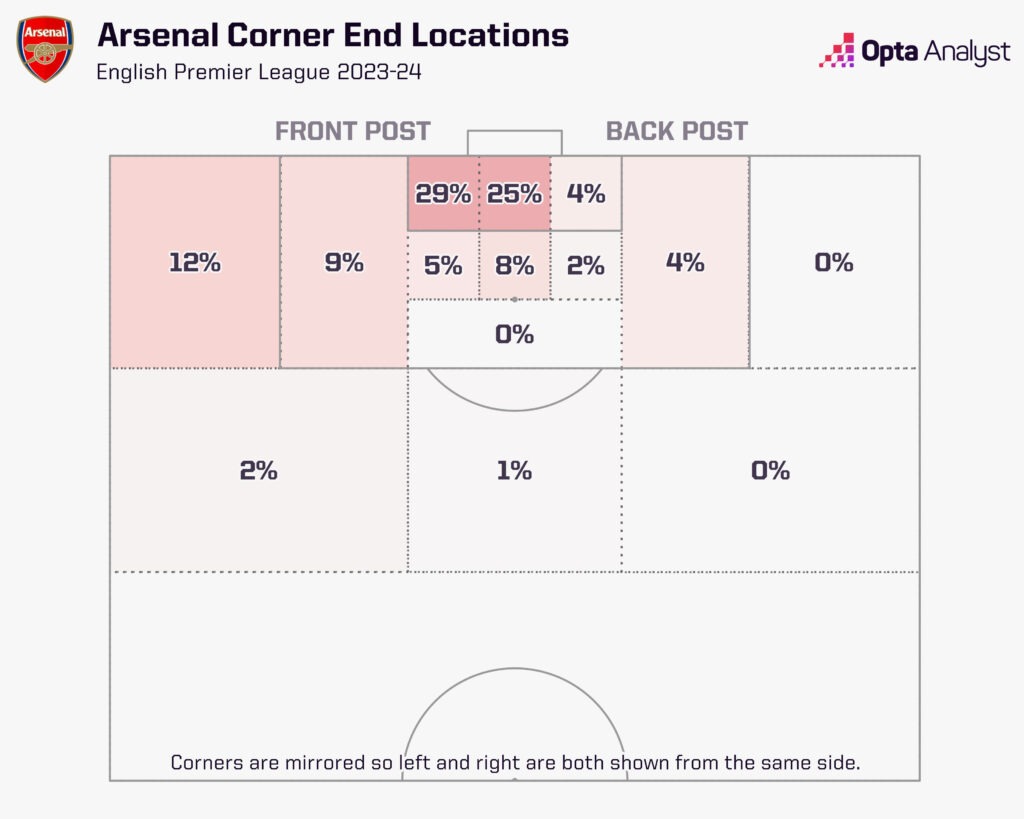
We must also highlight Arsenal’s efficiency from free-kicks, 30 of which have been crosses into the box. Just under a quarter (7 – 23.3%) of those have led to a chance created, which sees them rank seventh. Three have led to assists, however, which equates to 10%, the best record in the Premier League this term – in fact, no other team has tallied more than one assist in this way during the 2023-24 season.
What makes Arsenal’s output from set-pieces even more impressive is if we look at it in a historical context. This season, the Premier League is averaging 0.63 set-piece goals (excluding penalties) per game. Since the start of the 2006-07 season, the average has been 0.62, so the two figures are very similar.
But Arsenal’s total of 16 is already just two off their record best over a full season in the same period (18 in 2008-09 and 2009-10), while their frequency of 0.67 set-piece goals per game is far beyond anything they’ve managed over an entire campaign before. Of course, there’s still a while to go in 2023-24 and they could slow down, but they’re enjoying a kind of productivity they’ve never seen before, with 0.47 set-piece goals per game (in 2008-09 and 2009-10) being their previous best. This is without there appearing to be a particularly notable ‘boom’ in goals of this variety in general across the league.
We highlighted earlier in the season how Arsenal appeared to be struggling offensively, with their attacking numbers down almost across the board, but their threat from set-pieces has been fairly consistent and undoubtedly played a role in ensuring they didn’t fall too far behind City and Liverpool.
Now, they appear to be firing on all cylinders after starting 2024 with four successive Premier League wins, three of which were particularly impressive.
They’re finding their groove at an opportune moment and still have the trump card of set-piece prowess – it could ultimately make the difference for them in the title race.
Enjoy this? Subscribe to our new football newsletter to receive exclusive weekly content. You should also follow our social accounts over on X, Instagram, TikTok and Facebook.
